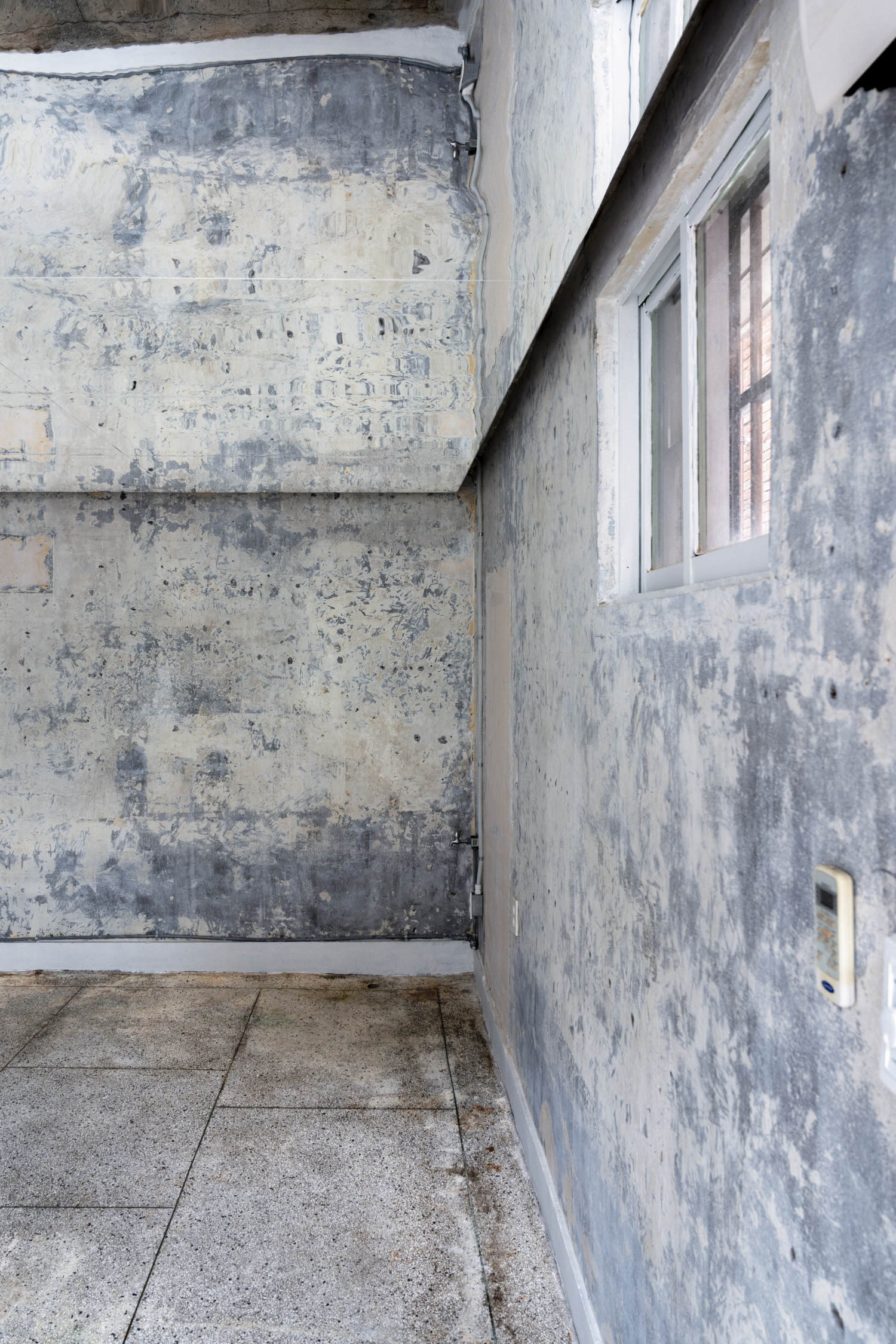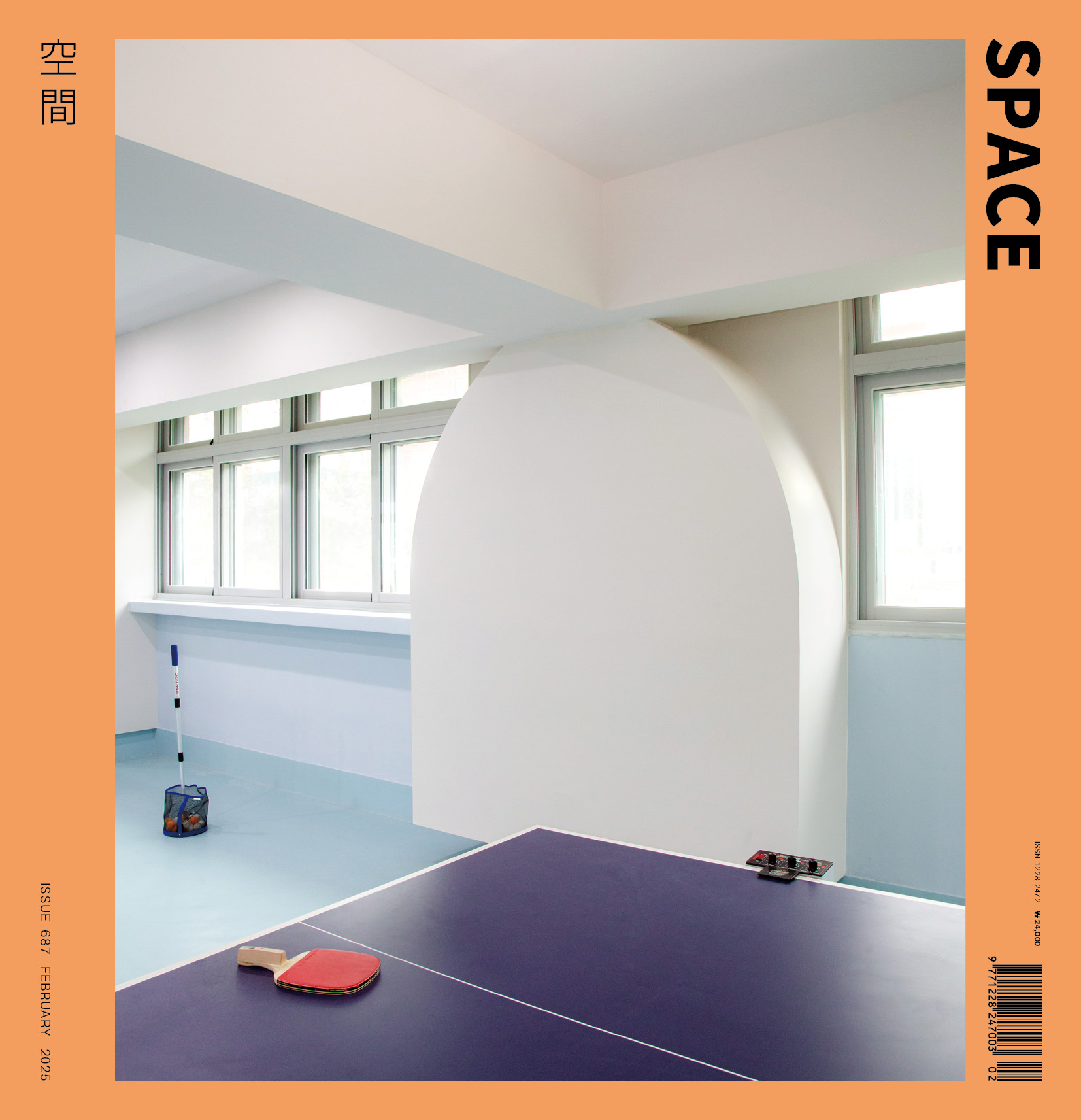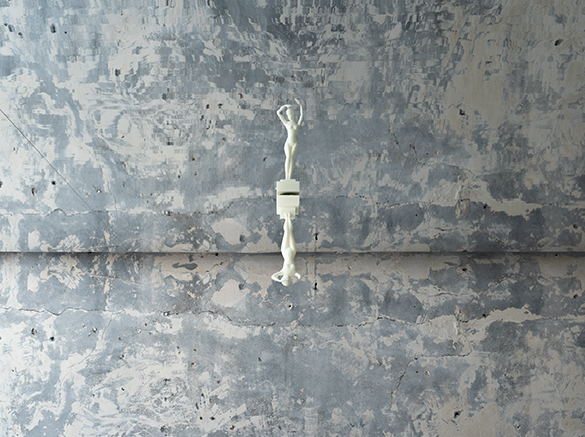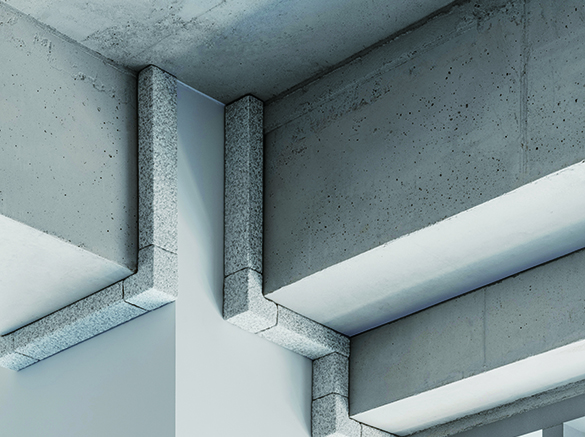SPACE February 2025 (No. 687)

Chon Jaewoo principal, HYPERSPANDREL & Jeong Haewook co-principal, Midday × Suh Jaewon principal, aoa architects
The Korean and the Western
Suh Jaewon (Suh): The works of HYPERSPANDREL and Midday distinguish themselves from the recent trend of so-called ‘fancy architecture’, which focuses on colour, light, materiality, emotion, and finish. Instead, their work places greater emphasis on discourse, leaning towards more conceptual and avant-garde approaches. Chon Jaewoo, whether intentionally strategic or not, does not reject but rather embraces the realities of our world—perhaps influenced by the fact that he did not grow up in Korea. Despite their experiences at David Chipperfield Architects (hereinafter DCA), a firm renowned for producing high-quality, commercially viable modern architecture, Oh Yeonjoo and Jeong Haewook have taken a different approach to interior design. Rather than employing a refined method of concealing various elements, they opt to expose and accentuate each component, creating a sense of thickness and solidity.
Jeong Haewook (Jeong): The commonalities between HYPERSPANDREL and Midday can be summarised in two points: the pursuit of idea-based architecture and the acceptance of Korea’s chaotic reality.
Chon Jaewoo (Chon): There was a central question in the architectural education I received, which was ‘is architecture without ideas truly architecture?’ I immigrated to Canada at the age of nine, and I completed my undergraduate studies at the University of Waterloo and my master’s degree at Harvard GSD. After graduating, I lived in Canada for about three more years before moving to China. The Coronavirus Disease-19 pandemic brought me unexpectedly back to Korea. Over the years, I have been referred to as Korean-Canadian, making myself of a hybrid being. It also means I am an outsider wherever I go. The sense of being an outsider and the instability that comes with that feels closer to me than being Korean of having a Korean identity. The excessive competition and the high suicide rates suggest that the anxiety long inherent in Koreans resonates well with my own anxiety as an outsider. When the pandemic swept across the world, engulfing everyone in fear over safety and economic instability, I found myself thinking that perhaps the world was finally beginning to understand the anxieties that Koreans have lived with for so long.
Jeong: In fact, Architecture as Fabulated Reality (2020) was written out of a sense of resistance to the ideas-driven nature of western architectural culture. There was a concern that building structures that are necessary for us might be more important than the world of discourse or ideas. Hence, the suggestion to separate architecture from buildings. I believed that classifying architecture as cultural exploration and understanding buildings as prioritising practicality would allow each area to develop independently. Once separated, it became easier to pursue ideas freely. The reason we pursue ideas is that everything else can be easily replaced in the market. There are many people who are good at design and building cost-effective structures, and designs that merely accommodate the client’s requirements and regulations are closer to a service. It is difficult to find uniqueness, like a patterened algorithm. If we can pursuade clients and the public with ideadriven architecture, wouldn’t that be an irreplaceable architectural act?
Suh: Do you have any objections to the work of DCA?
Jeong: Quite the opposite. Although DCA is an ideas-driven firm, the quality of its finishes is so high that it becomes difficult for people to register the underlying ideas.
Suh: However, DCA’s concepts are architectural and traditional, emphasising the relationships between elements such as space and volume, façades and interiors. Midday, on the other hand, used bold stone mouldings where the columns and beams meet in this project. This also speaks to the relationships between architectural elements, so one could say it is related to the experience of DCA. However, the initial idea for this work started by thinking about the way people perceive objects in virtual space and define them as selectable outlines. As this idea was adapted into architecture, it established and revealed the relationship between columns and beams. Strictly speaking, the ideas of DCA and Midday are distinct.
Jeong: I think it’s because western architectural language is inherently unsynchronised. By adopting their traditional approach to architecture in a way we can agree with, we aimed to transform it into a more universal vocabulary, even if it deviates slightly from the western context. This project can be seen as creating a connection between the way we perceive objects through software and the means of expression in western architecture.

Gwangwoon Interior(2024)
The Contextual and the Functional
Suh: Is it not possible to integrate buildings and architecture when making a distinction between the two? For instance, it is unfortunate that the concept of Gwangwoon Interior (2024) remains only in temporary facilities. It would be meaningful to embed such concepts into projects like museums or multi-family housing. This way, we can reduce the sense of futility in architecture.
Chon: If Midday distinguishes between buildings and architecture, I see it in more detail as a spectrum where buildings and architecture exist, and there are also derivatives from this spectrum. Souveniers and keychains can also be said to be derived from this spectrum. Gwangwoon Interior may not have fully integrated buildings and architecture, but it infused architectural ideas into the realm of interior design. Rather than merely waiting for opportunities to construct new buildings, architectural work that holds as much value as new construction within the constraints of current circumstances had been pursued.
Suh: In that sense, I also found Gwangwoon Interior very interesting. However, walking through Seongsu-dong, I noticed many similar buildings with rough finishes. This made the work seem somewhat excessive in its rhetoric. Is there a standard for distinguishing between what is rhetoric and what is genuine?
Chon: In the past, I asked Suh Jaewon how the public might interpret concepts related to satire or haehak in the final result. This question actually seemed to stem from my own concerns about rhetoric. To appeal to the public with satire, haehak, or rhetoric, I believe architecture must not be confined to the final result alone. It needs to encompass the process of becoming architecture and the narratives embedded within it. At the same time, in Gwangwoon Interior, I think I explicitly used rhetoric by discovering and using other’s expressions as an outsider. Although I avoid western methodologies, I approached it as a sort of manifesto, declaring that I would use specific, common expressions as source for my architecture.
Jeong: Among Chon Jaewoo’s concepts, I like the idea of souvenirs the most. It’s a way of owning architecture through narrative. We live in an era where we can feel a sense of our past existence even with something virtual that doesn’t actually exist, and this sense resonates well with souvenirs.
Chon: Who buys buildings? The consumer base is far too narrow. The idea of souvenirs also reflects a concern about whether architects can make a living without constructing buildings—that is, whether they can essentially engage in paper architecture.
Jeong: Even if souvenir-like architecture doesn’t materialise into buildings, it can still inspire and invigorate, potentially leading to a new type of architect. While it would be ideal for buildings and architecture for function and context to be integrated, if forced to choose in an extreme situation I would prioritise context.
Chon: Both of our projects are interior works, which inherently makes it challenging to fully integrate function and context. After all, isn’t interior design essentially a form of ornamentation? Alejandro Zaera-Polo mentioned in his essay ‘The Politics of the Envelope’ (2008) that only the surface remains in architecture. However, the surface is deeper and more complex than it seems. If the domain of surfaces continues to expand, we can claim that territory as our new area of work. For example, we explored this idea in the digital project Peel City Variations (2020 –), imagining a scenario where double glazing continues to expand, transforming it from a mere surface into a space itself. Gwangwoon Interior also extends from this exploration of surface concepts. Additionally, while many architects tend to eliminate mouldings, I often imagine scenarios where mouldings grow larger and more amplified.
Suh: I have a concept I call the 3Bs of design: Big, Bold, and Brave. Thin designs are typically favoured only by architects, while clients dislike them for appearing weak. Why not make them bolder? Midday’s mouldings, for instance, are essentially finishes meant to resolve the junction of two elements at a corner. Normally, 2 – 3cm would suffice, but they deliberately made them excessively thick. Just like exaggerating and amplifying double or triple glazing to make it functional as a space, it would be good if ideas could have functionality. Maybe it’s because of the generational difference that drives me to say this, but if it’s only beautiful, it will remain merely a trigger to architectural discourse.
Jeong: If we expand the meaning of function, could we say that a trigger is the function of an idea? It’s a function on the verge of utility.
Suh: It becomes art when pushed to the extreme of uselessness.
Jeong: On the other hand, I think the scope of functionality is broadening and becoming virtual these days. Starbucks sells coffee, but in reality, it’s selling space. Similarly, we do far more than just making calls with an iPhone. This isn’t a reversal of purpose but rather an expansion of concepts. In the same way, the paradigm of architecture and functionality could also be seen as undergoing a transformation.

Gwangwoon Interior(2024)
The Elite and the Popular
Suh: It’s not just the works, but I particularly admire the attitudes and thoughts of both firms. However, compared to other young architects who adhere to a traditional architectural vocabulary, the concepts of the two firms might not be easily understood by the general public. Pop art and Marcel Duchamp’s works are very elitist in that they critique the systems and mechanisms of the art industry, making them hard for the public to fully grasp their meaning.
Chon: The public only needs to understand 2% of it. Midday’s Architecture as Fabulated Reality is also popular among students. It’s fine they don’t fully understand everything—they just need to find something that resonates deeply with them.
Suh: Even so, there’s always the desire to be fully understood by the public. Most people might not have heard about the Barcelona Pavilion. The sculptural quality of the stone in the Barcelona Pavilion was translated into a surface painting, subverting materiality while satirising the idea of its relevance in this era. It’s a work that conveys multiple architectural messages. I hope that even a small part of this concept gets embedded in future projects like bathrooms or flooring. As someone who supports both firms, I am concerned that it might remain as mere intellectual exercise.
Jeong: In countries where academia and architecture intersect more, there seems to be a consumer base that sustains itself through intellectual exercise alone. Korea, however, is relatively limited in this sense.
Chon: Personally, I tend to explore ways to engage with the public without being a wolf in sheep’s clothing.

IndependentComponents(2024) ⓒJang Mi
The Realistic and the Qualitative
Suh: As Jeong Haewook mentioned earlier, one of the commonalities between the two firms is the acceptance of reality. Gwangwoon Interior reflects an attitude of either acceptance or resignation towards the methods of construction workers, while Independent Components (2024) adds new elements without undermining the features of the existing building. To be blunt, Midday’s work may not be considered fancy by today’s younger generation of architects. However, to me, that’s a compliment. How do other young architects perceive your work?
Jeong: Many architects find our designs unfamiliar or ask how we managed to convince the clients.
Chon: While there are some rough aspects, certain choices like the use of marble demonstrates elements of sophistication.
Jeong: That said, we don’t focus our efforts on finishes.
Suh: I don’t entirely agree with this. It’s not that the work isn’t sophisticated. In the case of Independent Components, there was a client involved, so the refinement of the design likely had to be considered. On the other hand, Gwangwoon Interior reflects an acceptance of the reality in which it is difficult to create high-quality textures. I believe this attitude is something that the Korean society needs right now.
Jeong: In our project, the elements that enhance quality are furniture or lighting, not finishes. We drastically reduced the cost of finishes and instead produced furniture and lighting in factories for installation. Given the challenges of achieving satisfactory results on-site, we found alternative ways to enhance quality. Having high-quality furniture at half the cost of interior finishing is also beneficial for clients, as they can take the furniture with them when they move out. This is also a form of acceptance.
Chon: In Korea, buildings are fundamentally regarded as consumables, which inherently clashes with the mindset of crafting something precise and artisanal. For us, buildings are used and discarded quickly. However, I don’t see this as inferior. We should confront this with the perspective of, ‘You use your buildings for 100 years, but we only use ours for 30. Our architectural context is different from yours.’ This is how Midday explicitly focuses on temporary objects like furniture. I plan to discuss the temporality of Korean architecture someday. Historically, Korea seems to have used temporary finishing methods such as building structures with wood and covering them with hanji.
Suh: For us, structure has always been merely a means to stand. That’s why cladding is familiar. Even today, construction workers don’t understand the effort architects put into exposed finishes using materials like euro form.
Jeong: From my experience of working on numerous small to medium-sized buildings, I realised that the structure is such that construction companies have to incur losses for architects to build their portfolios. There is no mutual benefit between construction companies and architects. Returning to the acceptance of reality, I liked the point in aoa architects’ petit house cheongun (2024) where he embraced the frosted finishes seen in everyday architecture.
Suh: The frosted finishes reflect both an acceptance and resignation towards Korean architecture and its system. One can think of this as a last resort, but the other might interpret it as discovering a specific element through constant observation. I acknowledge both views because I also have ambivalent feelings about it. I believe the two firms are also navigating the gap between such ambivalence. Can double or triple glazing expand to sextuple glazing and become a building? Can the spaces between surfaces transform into actual spaces? Can function and ornamentation ever be fully separated, or will they persist in an ambiguous relationship? It feels like they are continually exploring the relationships between surfaces and spaces, function and ornamentation, while also heading somewhere as yet unknown, believing there is another realm waiting for them.

IndependentComponents(2024) ⓒJang Mi







